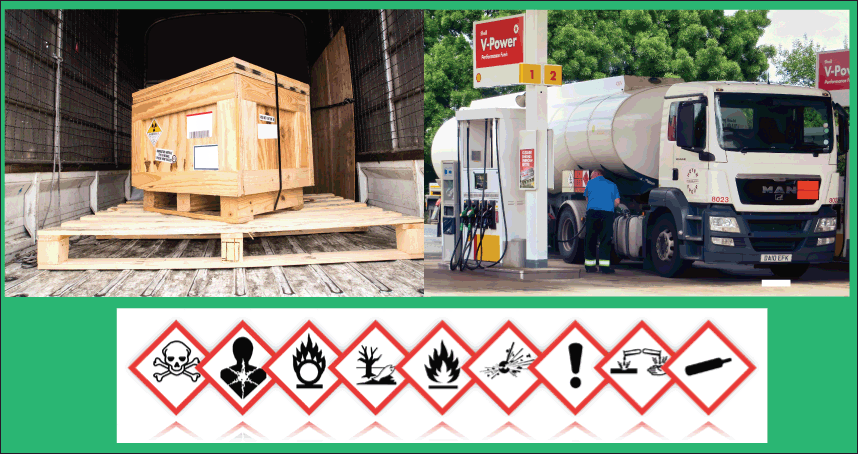
When packing products for delivery, the focus is frequently on the best way to protect the contents of the box from the knocks and bumps that will undoubtedly be caused by people handling it while in transportation. However, there are instances when packaging must safeguard individuals handling it from any risks that the contents may provide.
Potentially harmful drugs must be transported everywhere they are needed. Things like acids, solvents, combustible goods, corrosives, and even radioactive material can pose serious health risks if they are spilt, shattered, upended, or any other way damaged.
As with all products, you want to ensure that they arrive at their destinations safely, but because the repercussions of a broken package are so much worse, packaging quality and effectiveness must be of higher quality.
What Qualifies as a Hazardous Material?
Materials or chemicals that have the potential to hurt or injure persons, property, or the environment when carried commercially are referred to as hazardous materials.
To guarantee that the material is safely confined within the container during typical transport conditions, any packaging used to carry hazardous materials must be designed, constructed, maintained, correctly packed, and sealed.
Products that commonly use hazardous materials packaging include:
- Chemicals
- Paints and coatings
- Batteries
- Explosives and pyrotechnics
- Flavours and fragrances
- Sanitation
- Insecticides and pesticides
Packaging Dangerous Goods
You naturally want to take every precaution to safeguard sensitive, fragile, and precious objects in packaging so that they reach your consumer undamaged. The same strategy must be used for packaging dangerous commodities, but with increased protection.
That might imply stronger boxes, at the very least. Your best bet will typically be a plywood case.
Cardboard boxes are still an option, but you should pick a stronger box than you would typically for the weight of your product. Standard single wall boxes, for instance, can often hold up to 10 kg of weight, but if the contents are hazardous, make sure to use at least double wall.
Similarly, it could be a good idea to purchase a larger box than you would typically get in order to include additional internal protective wrapping or void fill, which can more effectively absorb any blows the box is subject to.
Labelling Hazardous Waste Packages Correctly
Hazard symbols are used to inform individuals when a potentially dangerous material is present. Why? Well, for example, 15% of employees in the EU regularly breathed in the dust and fumes produced by using chemical goods for at least a quarter of their working hours in 2015. Everyone needs to be knowledgeable about the many categories of hazardous compounds and how they should be handled in a working environment because the risk of long-term harm to these workers' health is dangerously high.
In 2015, the outdated European symbols were gradually phased out in favour of the CLP (Classification, Labelling and Packaging) pictograms, which are compliant with global danger sign usage.
It is crucial to understand what each symbol indicates, especially for workers who utilise hazardous compounds in any capacity as part of their profession, even though some are similar to their equivalent symbols under the previous system.
The following are the nine hazardous substance symbols:
Explosive gases (Symbol: exploding bomb)
If not handled properly, fireworks and other types of ammunition can explode. Materials marked with this sign call for specialised handling and should never be placed near heat sources like open flames.
Flammable liquids (Symbol: flame)
Products that are marked as flammable are more vulnerable to starting a fire. Petrol is one example, but it's vital to keep in mind that many elements, whether or not they're listed as flammable, might cause a fire under the correct circumstances. Any spark that can start a fire should be kept as far away from all flammable products as you can.
Oxidising substances (Symbol: flame over circle)
These compounds have a powerful reaction when combined with other substances, which can start or feed a fire. Bleach fits under this heading. Keeping away from heat and wearing protective gloves are two possible precautions.
Gas Under Pressure (Symbol: gas cylinder)
These chemicals, which are frequently found in medical or scientific professions, might explode when heated. Other times, the presence of refrigerated gas in containers marked with this symbol may result in cryogenic burns.
These compounds should always be handled carefully and may need to be kept out of the sun or away from heat sources.
Toxic (Symbol: skull and crossbones)
This frightening sign denotes materials that offer the greatest health concerns. They can be lethal if swallowed, consumed, or come into touch with unprotected skin. If this occurs, you should get emergency medical help right away.
Serious/long term health hazard (Symbol: health hazard)
If consumed, turpentine and other oils can have serious and long-lasting health effects. This statement should be on the container of any substance that can lead to cancer, respiratory conditions and harm to a pregnant woman or her unborn child.
Health Hazard (Symbol: exclamation mark)
Materials identified with this sign may irritate the skin or create other health problems like sleepiness or breathing troubles. Included are substances that endanger health if they are ingested, breathed, or come into touch with the skin.
This warning can be seen on the labels of many common cleaning products.
Corrosive (Symbol: corrosion)
When they come into touch with someone, especially their skin and eyes, substances marked with the corrosive symbol can severely harm that person, as well as damage things like metal and cause damage to other materials.
Environmental Hazard (Dead fish and tree)
This symbol is used to identify compounds that present a serious risk to the environment. For instance, they might endanger aquatic life and have the potential to have long-term negative effects.
Label Your Hazardous Parcels Safely with Label Source
Here at Label Source we stock a range of hazard labels for use in the packaging, labelling and transit of dangerous substances and chemicals in containers, drums or vessels.